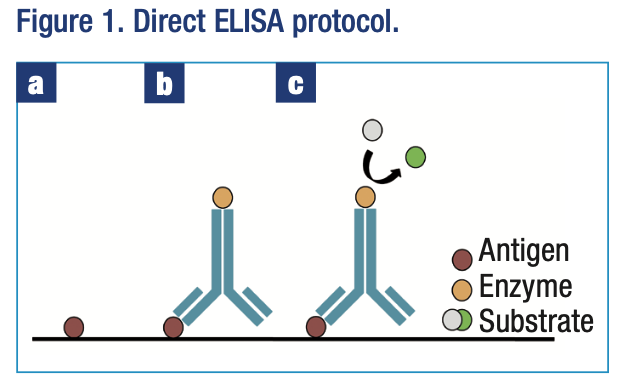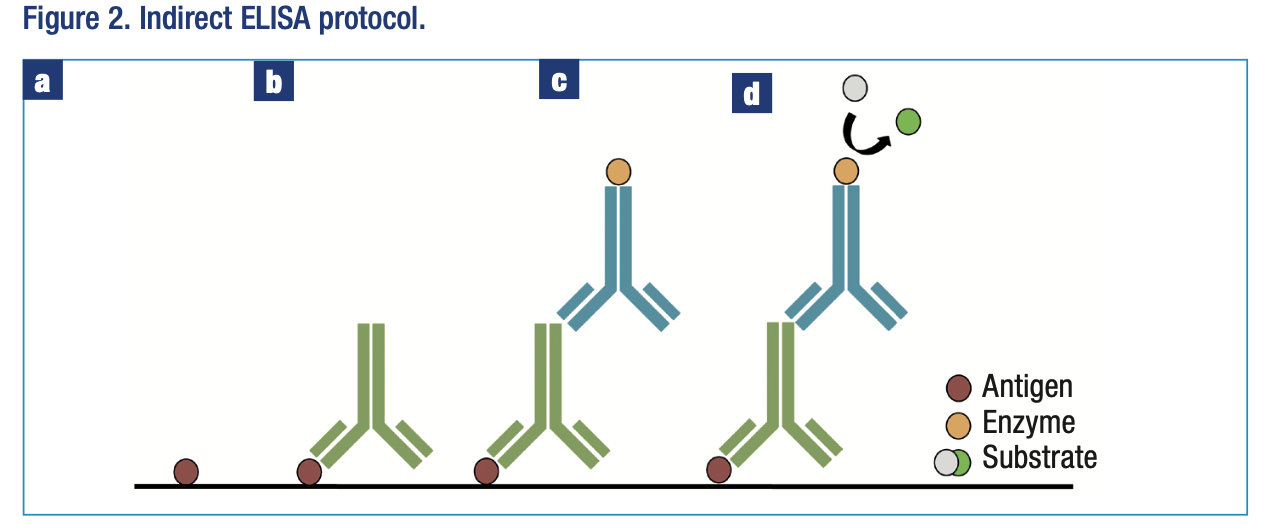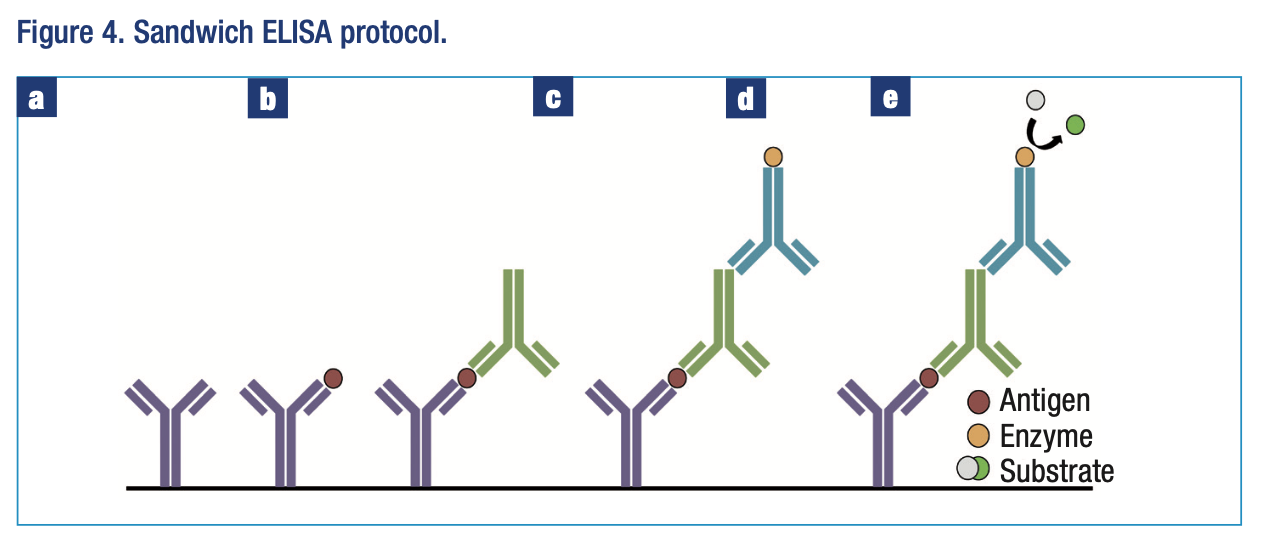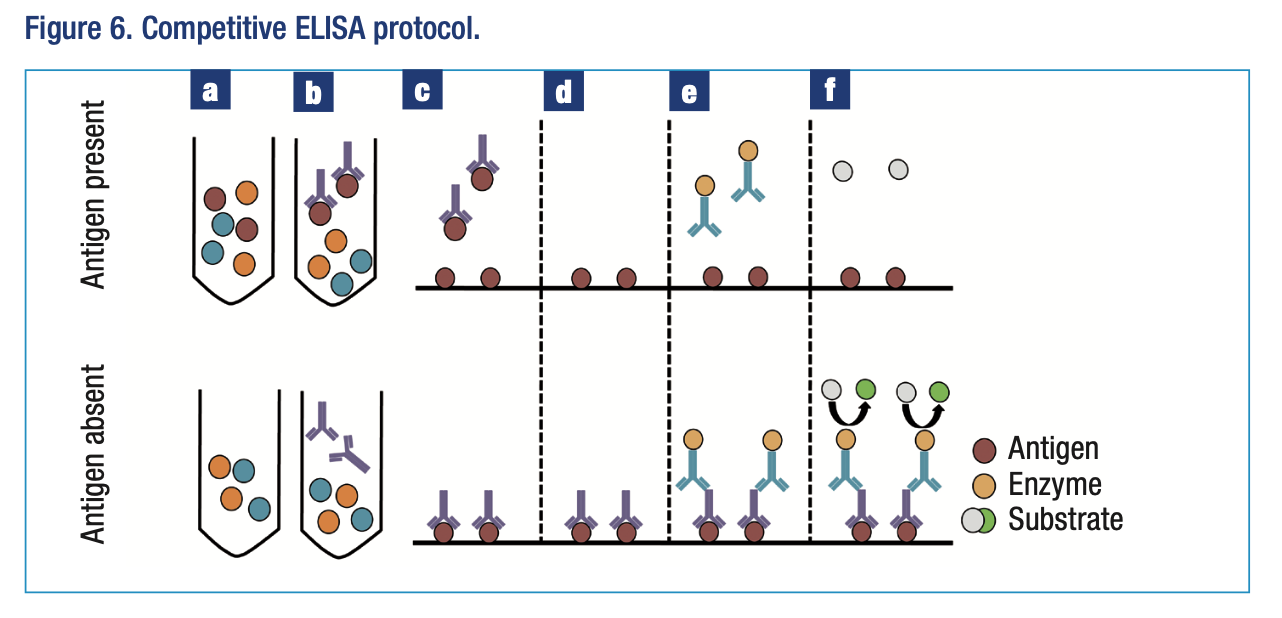Elisa test
ELISA stands for Enzyme-linked immunosorbent assay[@maghsoudlou2016Enzyme-linked immunosorbent assay (ELISA): the basics]. There are essentially 4 types of tests, I take the description and figures from[@maghsoudlou2016Enzyme-linked immunosorbent assay (ELISA): the basics]
Direct ELISA

In which the antigen (i.e. the particle that wants to be studied) binds to the substrate. This is achieved through plain surface charge interactions, which means that the medium must be controlled (the Ph).
Adding buffer guarantees that empty sites are blocked, and the antibody is added to create the antigen-antibody link. The antibody has an enzyme that interacts with the substrate, effectively changing color and thus enabling the detection of the target antigen.
Indirect ELISA

Very similar to the direct ELISA but this time instead of directly using an antibody with an enzyme, first a primary antibody is used and then a secondary antibody with an enzyme is used. The detection method is the same but also allows to add a fluorescent marker, transforming the test into a FLISA.
Sandwich ELISA

The approach is always the same, but this time the substrate is covered with a primary antibody. The antigen can bind to it and later a detection antibody is added for detection. This is the test used for home pregnancy tests. The advantage is the resulting higher specificity. This same approach is used by the Simoa devices, but on diffusing particles instead of a substrate.
Competitive ELISA

The competitive ELISA works the other way around that the rest of the elisa tests. First the substrate is coated with the antigen of interest. Then, the antibodies are mixed with the sample. If there are antigens in the sample, the antibodies will bound to them. If there are not, they will remain diffusing.
When the sample is placed on the substrate, the free floating antibodies will be able to bind to the antigens on the substrate, and then the process continues as in the indirect ELISA. If there are more free floating antibodies, means there were no antigens in the sample and the signal will be higher. Or the other way around, antigens will bound to the antibodies before placing them on the substrate and then the labeling process will be quenched. Higher signal means lower concentration.
These tests are used for unpurified samples or to detect molecules without multiple epitope. However, they are not very specific.
Backlinks
These are the other notes that link to this one.
